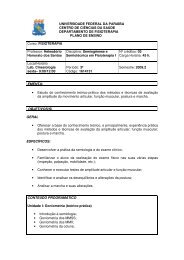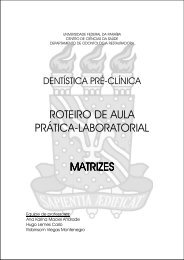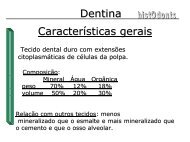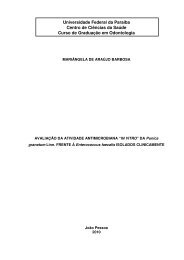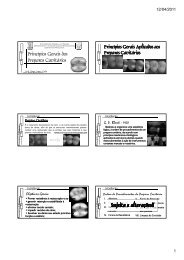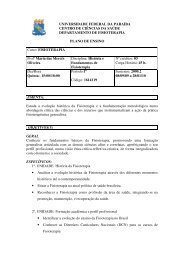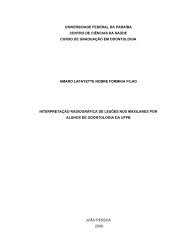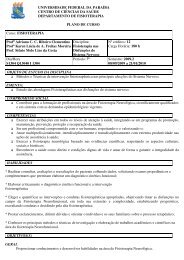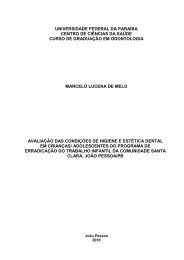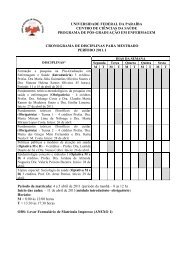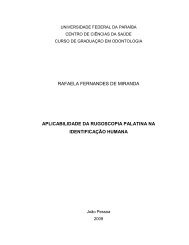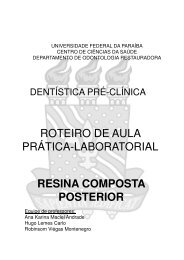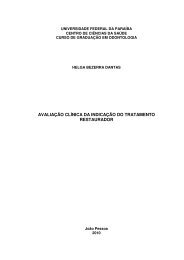15. estudo histomorfometrico da reparação óssea em ratos após o ...
15. estudo histomorfometrico da reparação óssea em ratos após o ...
15. estudo histomorfometrico da reparação óssea em ratos após o ...
Create successful ePaper yourself
Turn your PDF publications into a flip-book with our unique Google optimized e-Paper software.
ABSTRACT<br />
This study was developed with the intention to evaluate histomorphometric<br />
bone repairing in skull defects created in Wistar rats, above the critical limit<br />
using synthetic biomaterials (hydroxyapatite ceramic + β-tricalcium phosphate).<br />
Were used in the study 18 rats were randomly divided into three groups G1, G2<br />
and G3, with 6 animals each. The study was paired with defect created in the<br />
parietal bone on each side of the median sagittal suture of the animal, where<br />
the left side corresponded to the experiment, Group A, (filled with biomaterial of<br />
synthetic origin) and the right to control, subgroup B, ( filled by blood clot). The<br />
specimens were sent for histological examination by conventional light<br />
microscopy, at 15, 30 and 45 <strong>da</strong>ys, which corresponded to the G1, G2 and G3.<br />
The results from these images were submitted to Fisher Exact test for<br />
comparison between groups and the Mann-Whitney to compare groups for<br />
subgroups, evaluating bone repair (quantification of newly formed bone matrix).<br />
We used SPSS (Statistical Package for Social Sciences) 13.0 for Windows, and<br />
statistical analysis with significance level of 5%. From the results it was<br />
concluded that although not statistically significant, the bone defects are<br />
submitted to the biomaterial showed better bone healing in the control group.<br />
Key-words: Bone Regeneration. Biocompatible Materials. Rats



